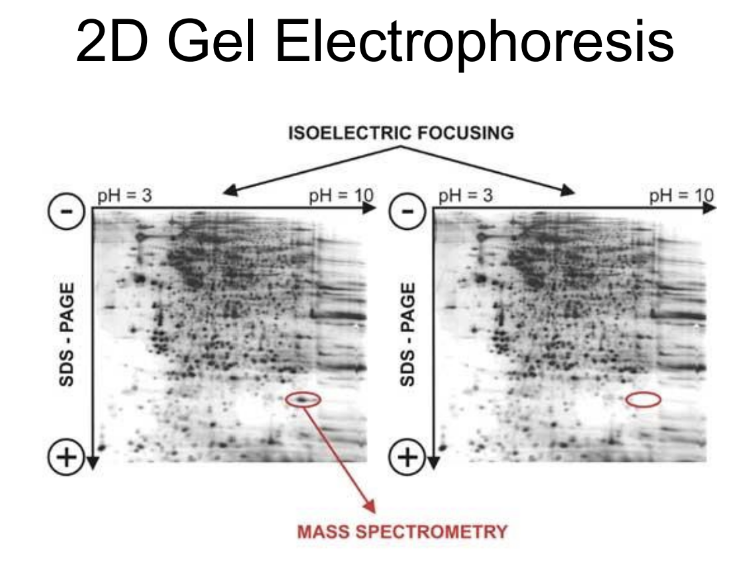L8: Global gene regulation
1/22
Earn XP
Description and Tags
Flashcards covering key concepts from the lecture on gene expression regulation.
Name | Mastery | Learn | Test | Matching | Spaced |
|---|
No study sessions yet.
23 Terms
What are global gene regulators?
Global gene regulators are proteins that control the expression of a large amount of genes e.g sigma factors, CRP (activator),
Each global regulator is thus said to have a regulon
Allows for coordinated expression in response to environmental changes.
What does the lac operon consist of?
The lac operon consists of LacI, which is not a global regulator, and CRP (CAP), which is a global regulator i.e. 176 operons activated and 16 operons repressed

What are things to consider when studying such large regulons?
• Binding sites alone may not tell whole story
• In a hierarchial system, one regulator may regulate another regulator.
• Proteins regulating one operon could lead to further regulation of 100 operons.
• Thus transcription across entire genome needs to be viewed.
What is a microarray?
A microarray contains thousands of microscopic spots of DNA oligonucleotides, each spot representing a specific gene or section of DNA.
Microarray technology is based on _________
the hybridization of DNA sequences.
How to carry out microarrays?
• Isolate total RNA from Wildtype bacteria and bacteria with a mutation in gene X (mutant X)
• Convert both RNAs → cDNA using reverse transcriptase (RNA is more stable to work with than cDNA)
• Wildtype bacteria cDNA labelled Red and mutant X bacteria cDNA
labelled Green
• Mix both in equal quantity and allow to hybridize to a microarray chip
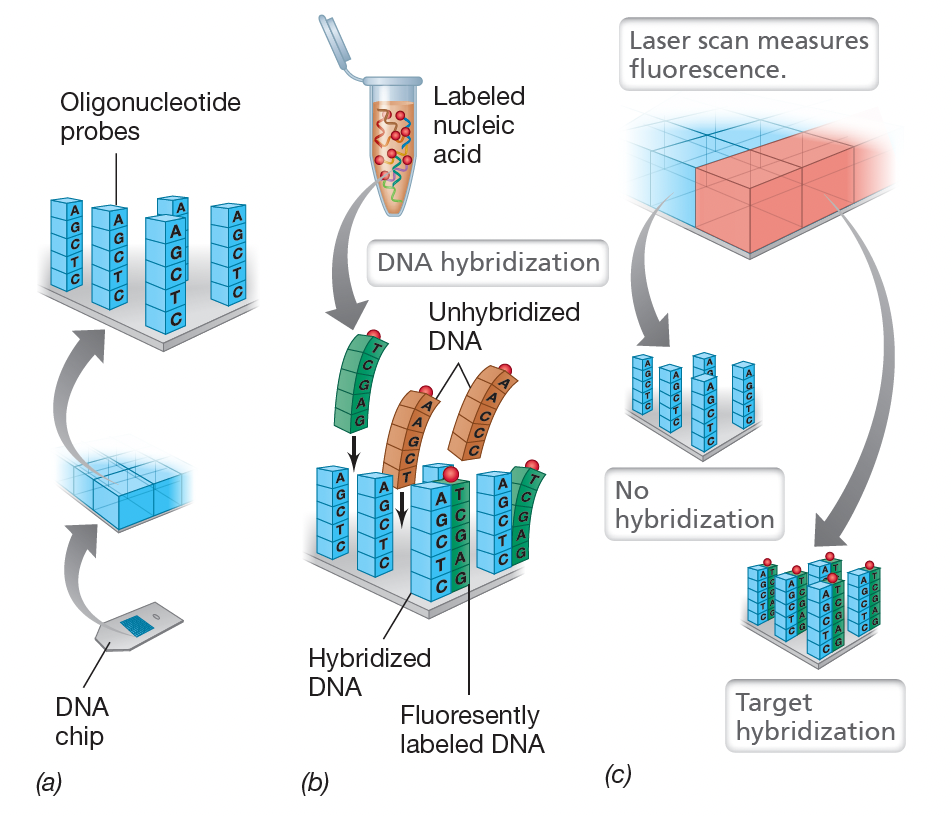
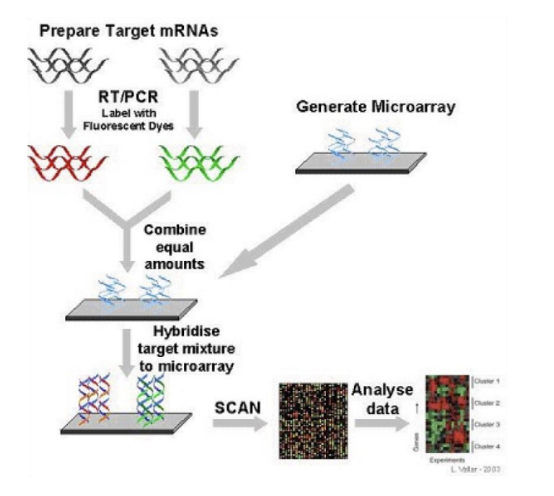
How is microarray labeled?
cDNA from different sources is labeled with different dyes to compare gene expression.
What is the effect of more RNA presence in wildtype bacteria compared to mutant X in a microarray?
If more RNA is present in wildtype, the dot will stain more red, indicating that the gene is induced by protein X in its absence.
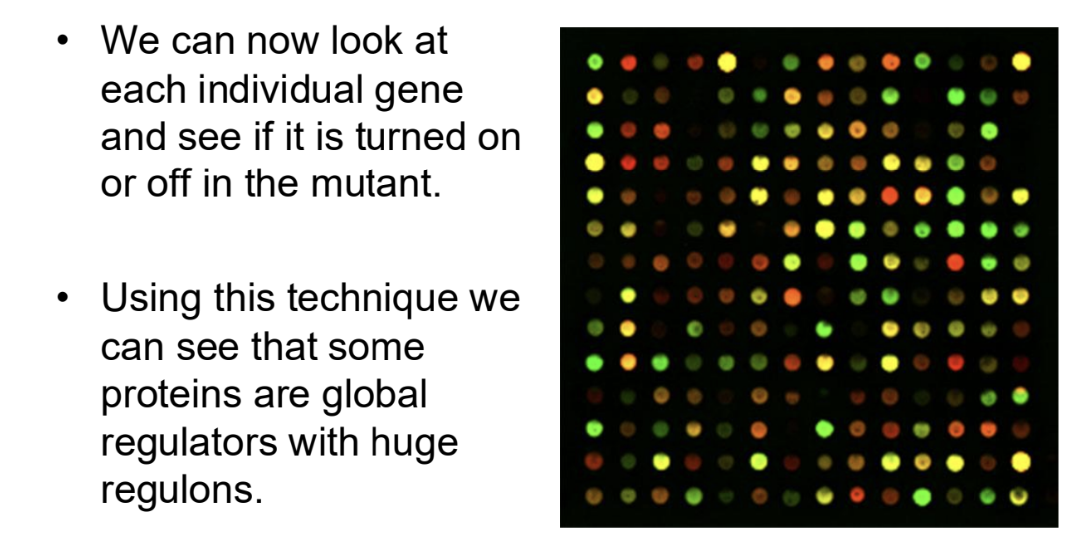
What does next generational sequence allow for, what are some advantages/disadvantages?
Next generation sequencing allows for the identification and quantification of samples without the need for a pre-existing DNA library or chips, using RNA sequencing
• Advantages: greater accuracy and comprehensive data collection
• Disadvantages – Cost and technical difficulty but getting more popular.
What is the significance of DNA supercoiling in bacterial. cells?
DNA supercoiling is important & keeps it in a supercoiled state for DNA organisation as they DONT have histones (highly organised structures) and gene regulation.
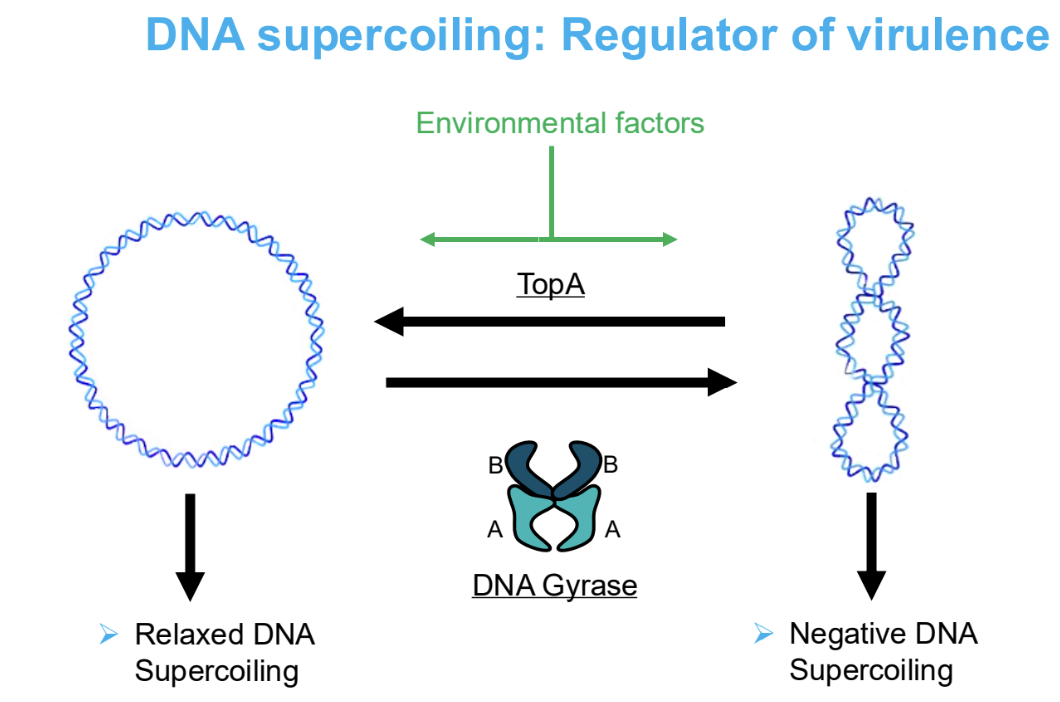
Which enzyme causes supercoiling of DNA in bacteria?
DNA gyrase, which introduces negative supercoils into the DNA structure, aiding in DNA replication and transcription.
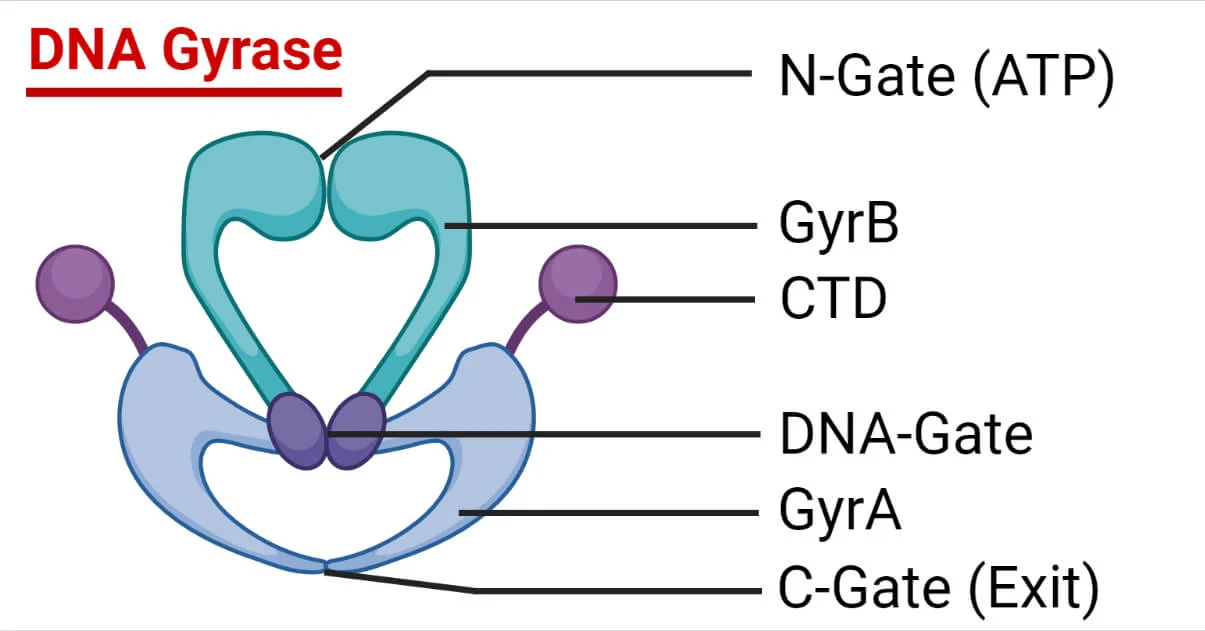
DNA supercoiling is a regulator of virulence: Relaxed DNA ____ , negative DNA _____
leads to increased expression, inhibits gene expression.
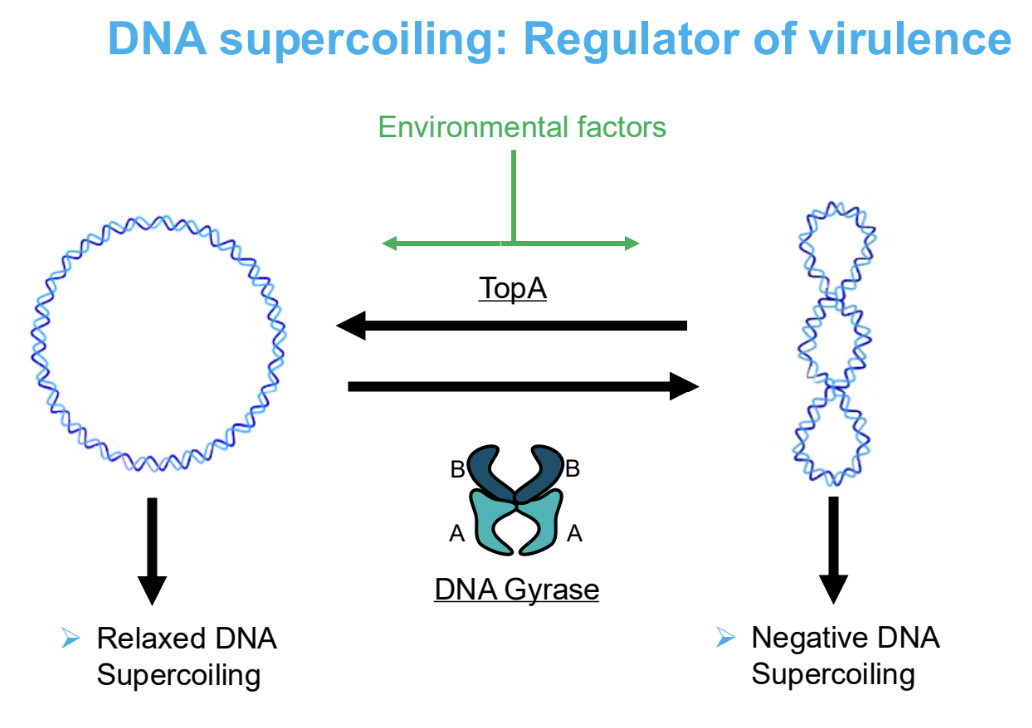
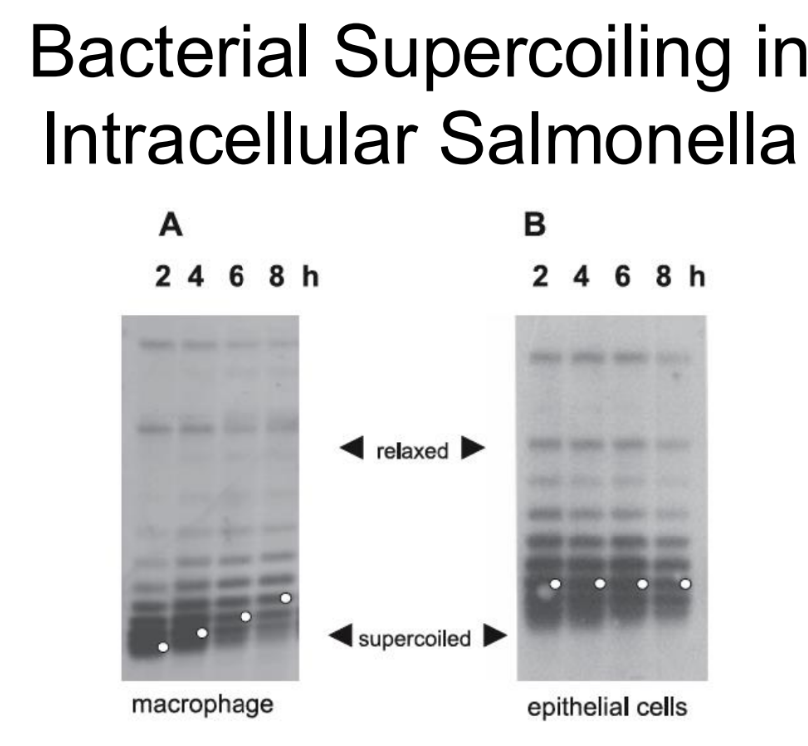
What did studies show about DNA supercoiling in intracellular Salmonella inside human cells such as macrophages and epithelial cells?
• DNA supercoiling is unchanged when Salmonella enters an epithelial cell
• DNA supercoiling is relaxed when it enters a macrophage cell
*lighter bands show less supercoiled state, darker are more supercoiled
What effect does novobiocin have on DNA supercoiling?
Novobiocin relaxes DNA supercoiling, which can induce an increase in ssrA mRNA levels.
This antibiotic inhibits DNA gyrase, leading to the relaxed supercoiling that affects gene expression.
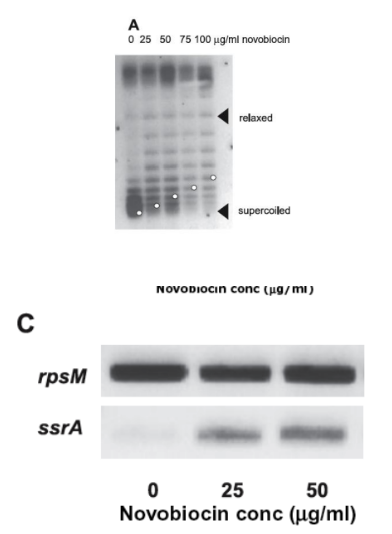
What is ssrA's role in Salmonella?
Ir is a key regulatory gene (part os ssrAB TCRS) essential for the SPI-2 pathogenicity island, which is crucial for macrophage survival.
• Thus relaxation of supercoiling (TopA) turns on ssrA
which in turn induces SPI-2
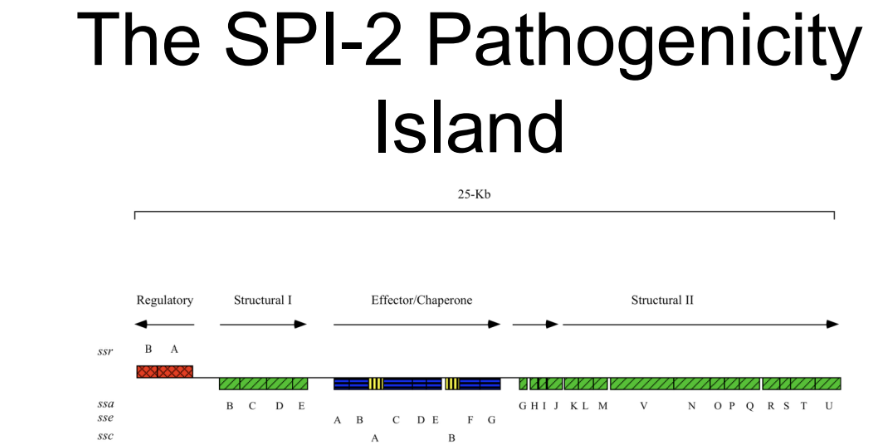
Is Salmonella the only example of an organism that requires supercoiling for virulence?
No, Campylobacter species (leading cause for gastrointestinal food poisoning) also show supercoiling controls motility and influenced by mucus from different sources.
• The more relaxed the DNA the more
invasive the bacteria
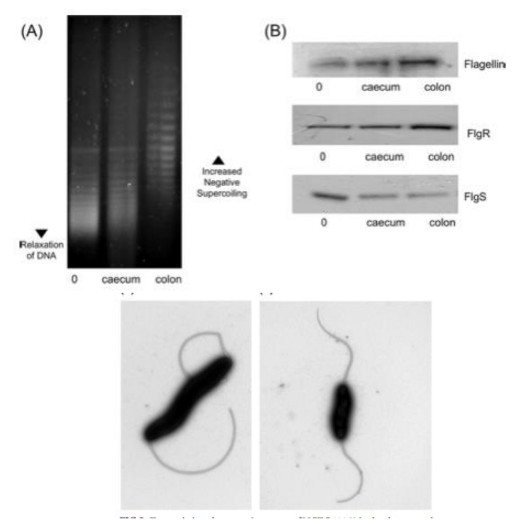
How is supercoiling related to Fluoroquinolone resistance?
Mutated GyrA leads to relaxation of DNA supercoiling
• Makes resistant strains less motile, more invasive and more virulent
• Also more capable of forming biofilm under aerobic conditions.
• So antimicrobial resistance can affect supercoiling which can in turn affect virulence and transmission of pathogens
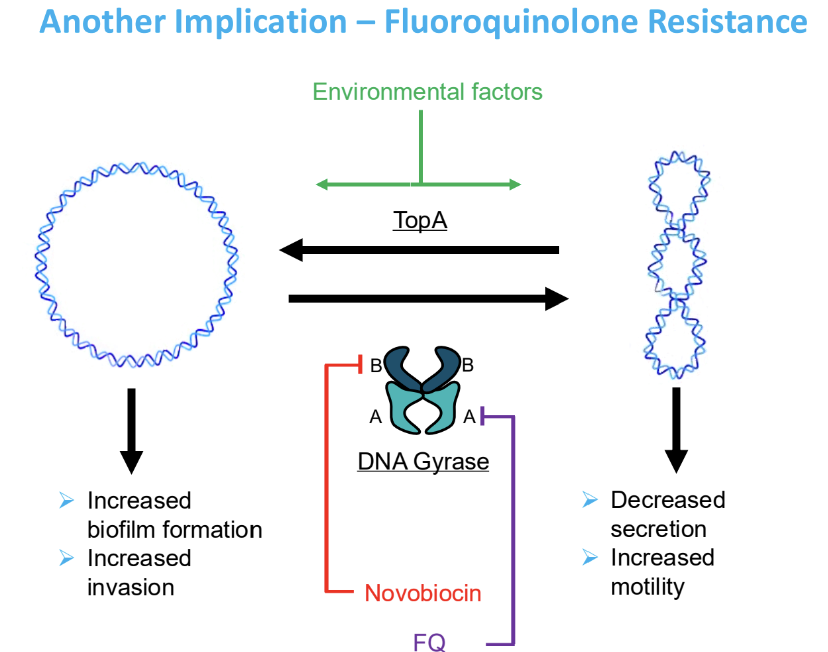
What are nucleoid associated proteins (NAPs) ?
Nucleoid associated proteins (histone-like, more primitive bind in large numbers to the genome) are major global regulators that play roles in gene regulation.
e.g. IHF play a major role in allowing upstream regulators to contact RNAP and facilitate the bending and structuring of DNA for proper transcription initiation
*binds to minor groove
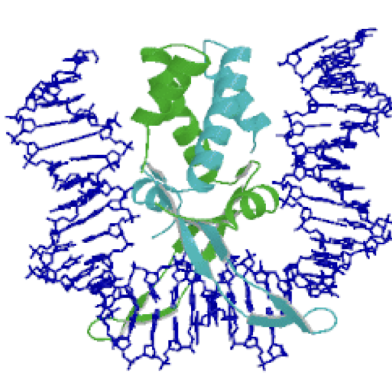
what are the silencers?
Family of nucleoid proteins act which act primarily as repressors
• H-NS and its relatives may be important in horizontal gene transfer
• Evolutionary benefit in keeping gene OFF 1st, which produces a model where genes are taken up and immediately silenced.
How do sigma factors affect global gene regulation and what are some examples?
Subunits of the RNAP can have huge effects on gene regulation
• RpoS a key player in Salmonella and E. coli
• SigH playing a role in Bacillus sporulation, only needed in times of need
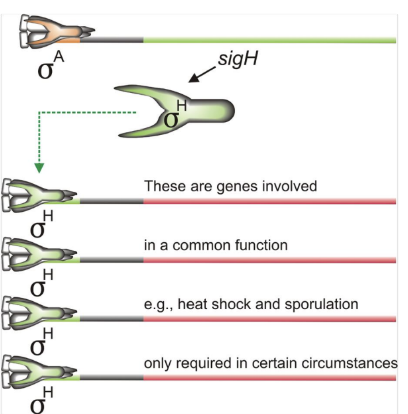
What is one limitation of microarrays?
Can only provide information about transcriptional regulation and do not account for post-transcriptional changes (even after RNA is produced)
How does proteomics aid in gene regulation studies in seeing if protein levels change or don’t change?
Proteomics allows comparison of protein profiles between wildtype and mutants to identify differentially expressed proteins, both transcriptional and post-transcriptional
What is the benefit of using 2D gel electrophoresis?
It enables the separation of proteins based on their isoelectric point and molecular weight, facilitating the identification of protein expression levels and modifications.
